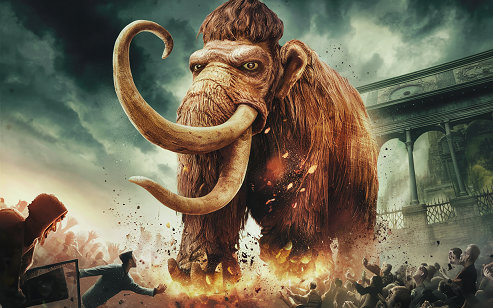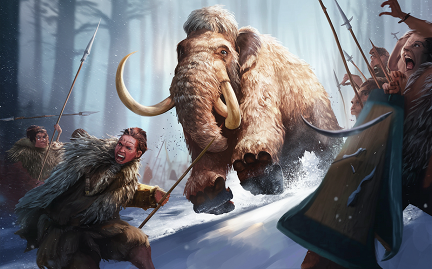Resurrecting the Woolly Mammoth: Science, Ethics, and Future
Written on
Chapter 1: The Fascination of Cloning Extinct Creatures
Have you ever imagined witnessing a creature from the Ice Age roam the Earth once more? This intriguing possibility may soon become a reality. The endeavor to resurrect the woolly mammoth transcends mere science fiction; it is a tangible project actively pursued by scientists and biotechnology firms today. This bold initiative not only ignites curiosity but also promises substantial contributions to science, conservation, and our comprehension of ancient ecosystems.

Section 1.1: The Genetic Blueprint of Resurrection
Leading this groundbreaking scientific mission is the esteemed geneticist George Church and his team at Harvard University. They are focused on crafting a hybrid woolly mammoth embryo by integrating vital genetic traits from the extinct species—like its long, shaggy fur, thick fat layers, and blood suited for cold climates—into the genome of the Asian elephant, its closest living relative. This complex process employs advanced gene editing techniques, with 45 mammoth-like modifications already successfully incorporated into the Asian elephant's DNA. The ultimate aim is to produce a creature that not only resembles the woolly mammoth but is also capable of thriving in the environments where its ancient ancestors once lived.

Section 1.2: The Journey of Bringing Back the Mammoth
The road to reviving the woolly mammoth is intricate and involves several critical stages. The biotech company Colossal, heavily engaged in this initiative, outlines essential steps from sequencing the genomes of both the Asian elephant and the woolly mammoth to editing elephant cells with mammoth DNA and potentially birthing mammoth calves through surrogate elephant mothers. Each phase demands cutting-edge technology and careful reflection on the ethical implications surrounding such a revolutionary project.

Chapter 2: The Purpose Behind De-Extinction
The first video, How to Clone a Mammoth: The Science of De-Extinction, delves into the fascinating scientific efforts behind resurrecting this ancient species, highlighting the innovative technologies and methodologies involved.
But why pursue the resurrection of an extinct species? The reasons are as compelling as the project itself. Reintroducing woolly mammoths to the Arctic could aid in restoring the Mammoth Steppe ecosystem, a vast grassland that once blanketed much of the northern hemisphere. These ancient giants played a vital role in maintaining these ecosystems, which were more effective at sequestering carbon than the forests and wetlands that have since taken their place. By revitalizing this extinct species, scientists aspire to combat climate change by enhancing the Earth's ability to store carbon, addressing one of our era's most urgent environmental challenges.

Furthermore, the technologies and methodologies developed during the woolly mammoth resurrection project could have wider applications, potentially assisting in the conservation of endangered species and enriching our understanding of extinct organisms. This endeavor raises significant questions about the limits of science and our responsibilities toward nature, igniting a global dialogue on the ethics of de-extinction and humanity's role in shaping the planet's future.

Chapter 3: Challenges and Ethical Considerations
The second video, Can scientists clone the woolly mammoth?, examines the potential and challenges of cloning this iconic species, including the technological and ethical dilemmas faced by researchers.
The revival of the woolly mammoth presents profound ethical dilemmas. While the chance to bring back an extinct species is an enticing prospect for science, offering insights into genetics, evolution, and biodiversity preservation, it also compels us to confront our responsibilities as stewards of the Earth. Critics assert that focusing resources on de-extinction diverts attention and funding from conserving existing endangered species and their habitats. Moreover, the implications of reintroducing a species like the mammoth into contemporary ecosystems are unpredictable and may lead to unforeseen consequences.
The advancements in genetic engineering and CRISPR technology being developed for the woolly mammoth project could revolutionize conservation efforts, providing new methods to boost genetic diversity and resilience among endangered species. For instance, gene editing could enhance the ability of vulnerable species to withstand diseases or environmental changes. This innovative approach signifies a shift towards more proactive and technologically advanced methods of preserving biodiversity.
Chapter 4: Learning from the Past for a Sustainable Future
The woolly mammoth initiative is not merely about resurrecting an extinct species; it involves utilizing our understanding of the past to safeguard our future. By studying the ecological roles these ancient creatures played, scientists hope to gain insights into ecosystem restoration and climate change mitigation. The mammoth’s role in maintaining the Mammoth Steppe ecosystem, an essential carbon sink, illustrates how reintroducing extinct species could help rebalance ecosystems disrupted by human activities. This ambitious objective emphasizes the need to view de-extinction as a potential tool for environmental restoration and sustainability.
The Path Ahead: Moving Forward with Caution
As we delve deeper into the uncharted territory of de-extinction, it is essential to approach this journey with caution and responsibility. The prospect of resurrecting the woolly mammoth offers a unique chance to rectify past mistakes and provide future generations with the opportunity to witness the splendor of the natural world in its former glory. However, it also serves as a reminder of the delicate balance of life and the necessity for ethical considerations in our scientific endeavors. As this project advances, it will undoubtedly continue to provoke debate, inspire wonder, and challenge our perceptions of life, extinction, and our role in the natural order.